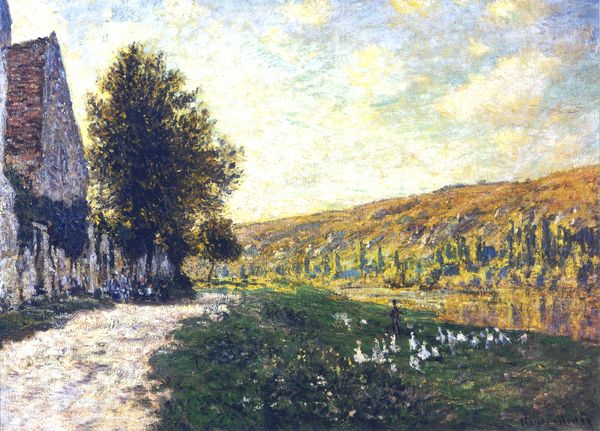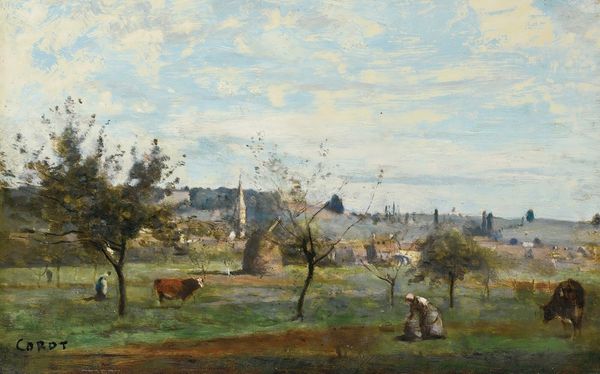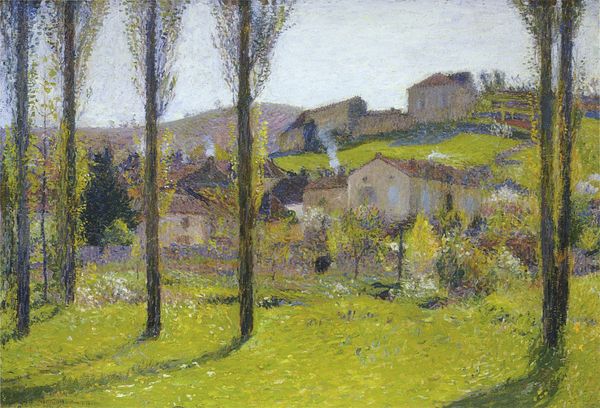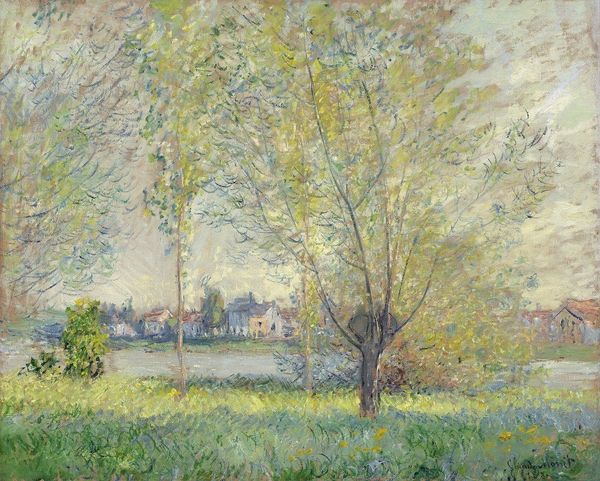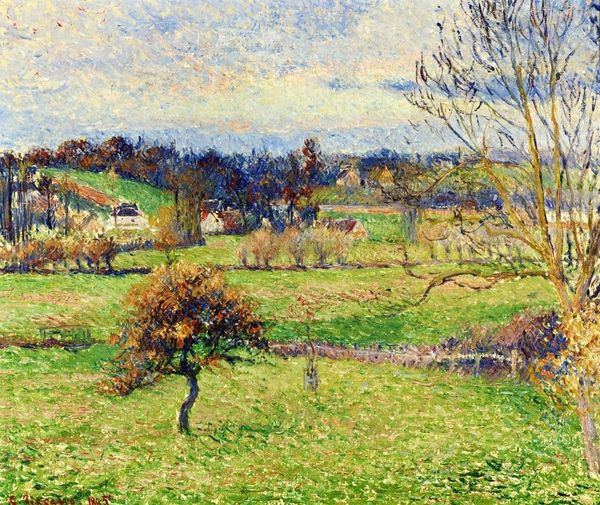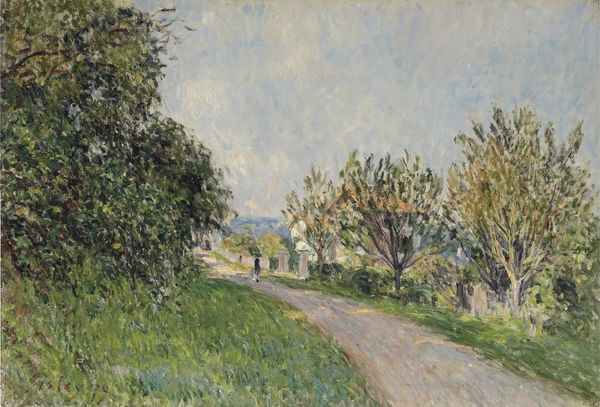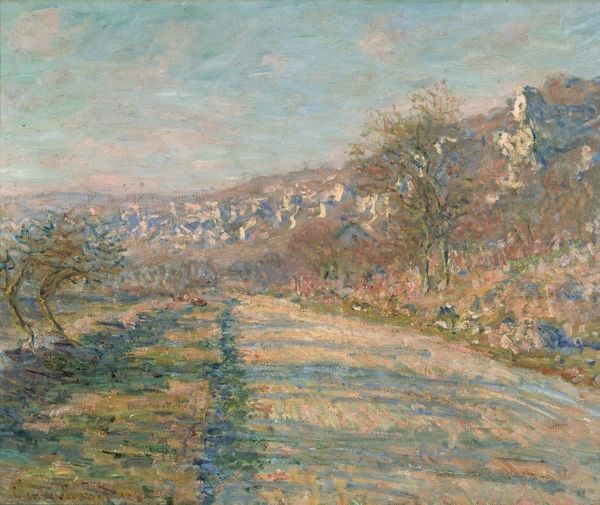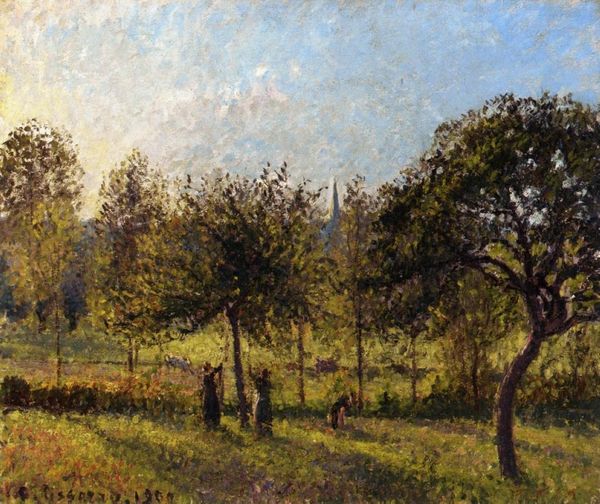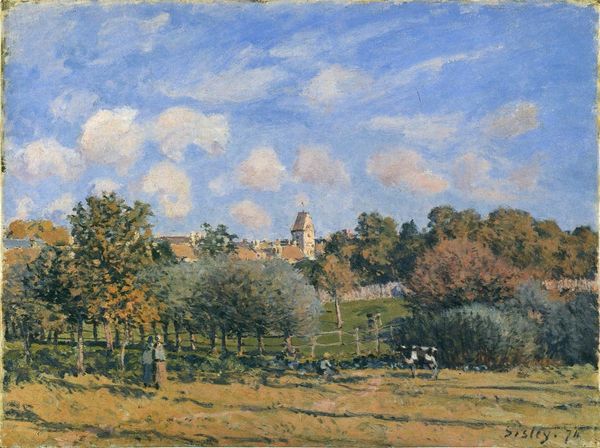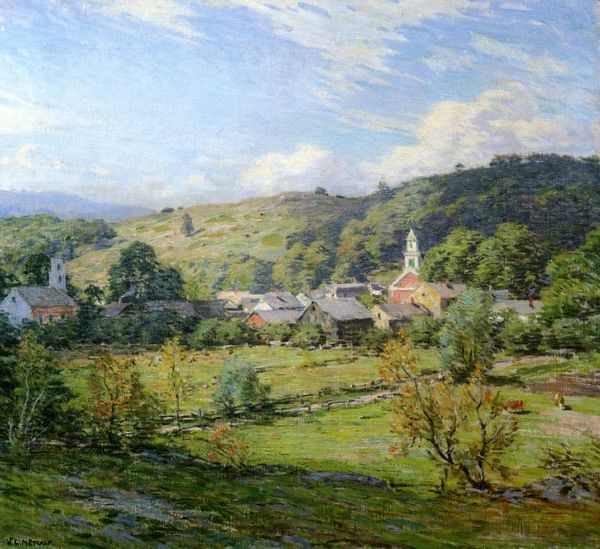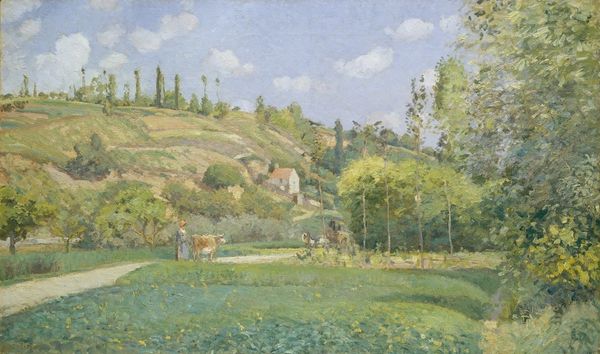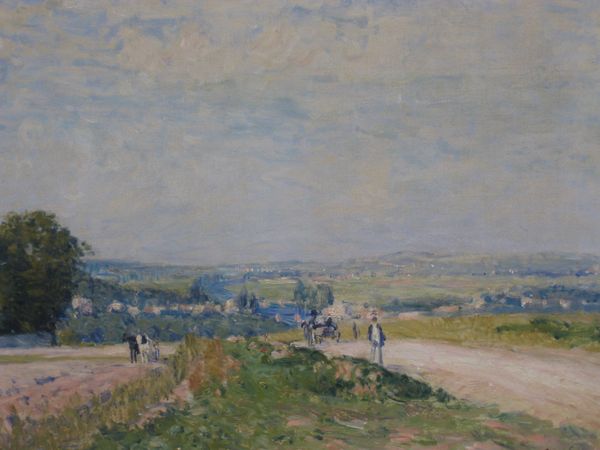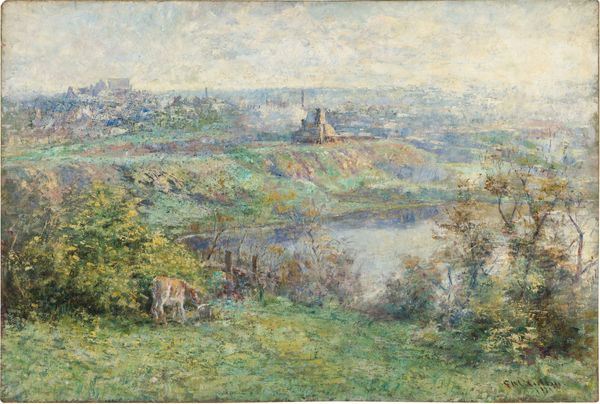
painting, plein-air, oil-paint
#
painting
#
impressionism
#
plein-air
#
oil-paint
#
landscape
#
form
#
realism
Copyright: Public domain
Editor: We're looking at Claude Monet's "Springtime in Vetheuil," painted in 1880, using oil paints. It's a classic Impressionist landscape. I find its open field so inviting. How do you interpret this work, thinking about its place and time? Curator: It’s beautiful, isn't it? But it's vital to acknowledge what Monet, a man of privilege, chose to portray, and more importantly, what he chose to exclude. Who inhabited these landscapes? Whose labor sustained them? Was this truly a space of leisure for all? Editor: I hadn't considered that angle. It does seem idealized. Curator: Precisely. Monet presents an image of pastoral tranquility, yet it's crucial to remember the political unrest simmering beneath the surface in late 19th-century France. Do you think that tension between the ideal and the real might manifest itself anywhere in the composition itself? Editor: Possibly in the fleeting, ephemeral quality of the light and brushstrokes? As if it might all vanish any moment? Curator: Perhaps! Monet, like many Impressionists, prioritised capturing a sensory experience—a single moment in time. But that choice has implications, too, diverting attention away from issues of class, labor, and the changing social fabric. Considering these social contexts is vital, would you agree? Editor: Definitely! I see how looking beyond the aesthetic can enrich our understanding of the work, questioning its role in representing reality. Curator: Absolutely. It's about engaging in a dialogue between the art object and the complex historical moment it emerged from. Editor: That's really made me rethink the image. Thanks!
Comments
No comments
Be the first to comment and join the conversation on the ultimate creative platform.
